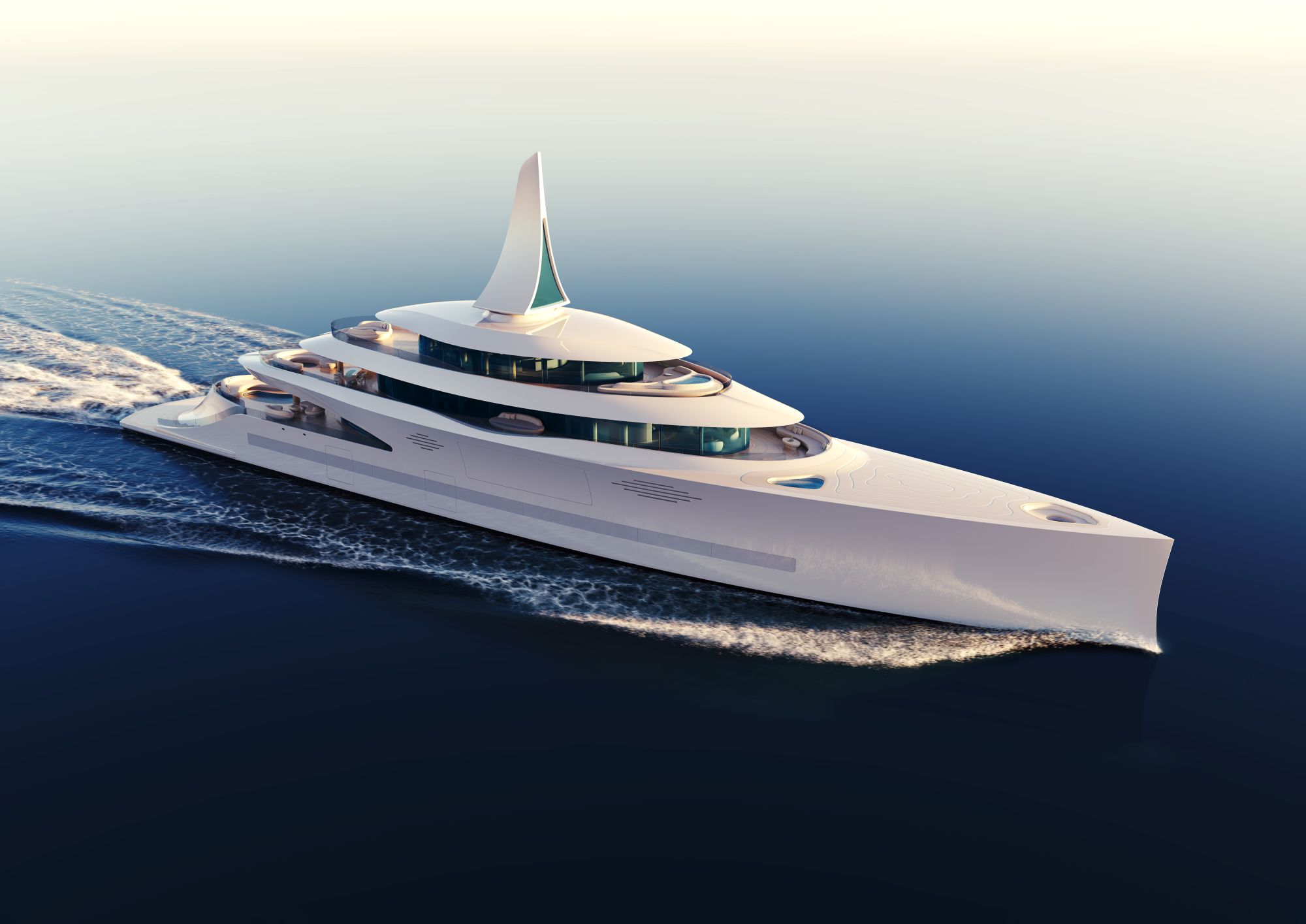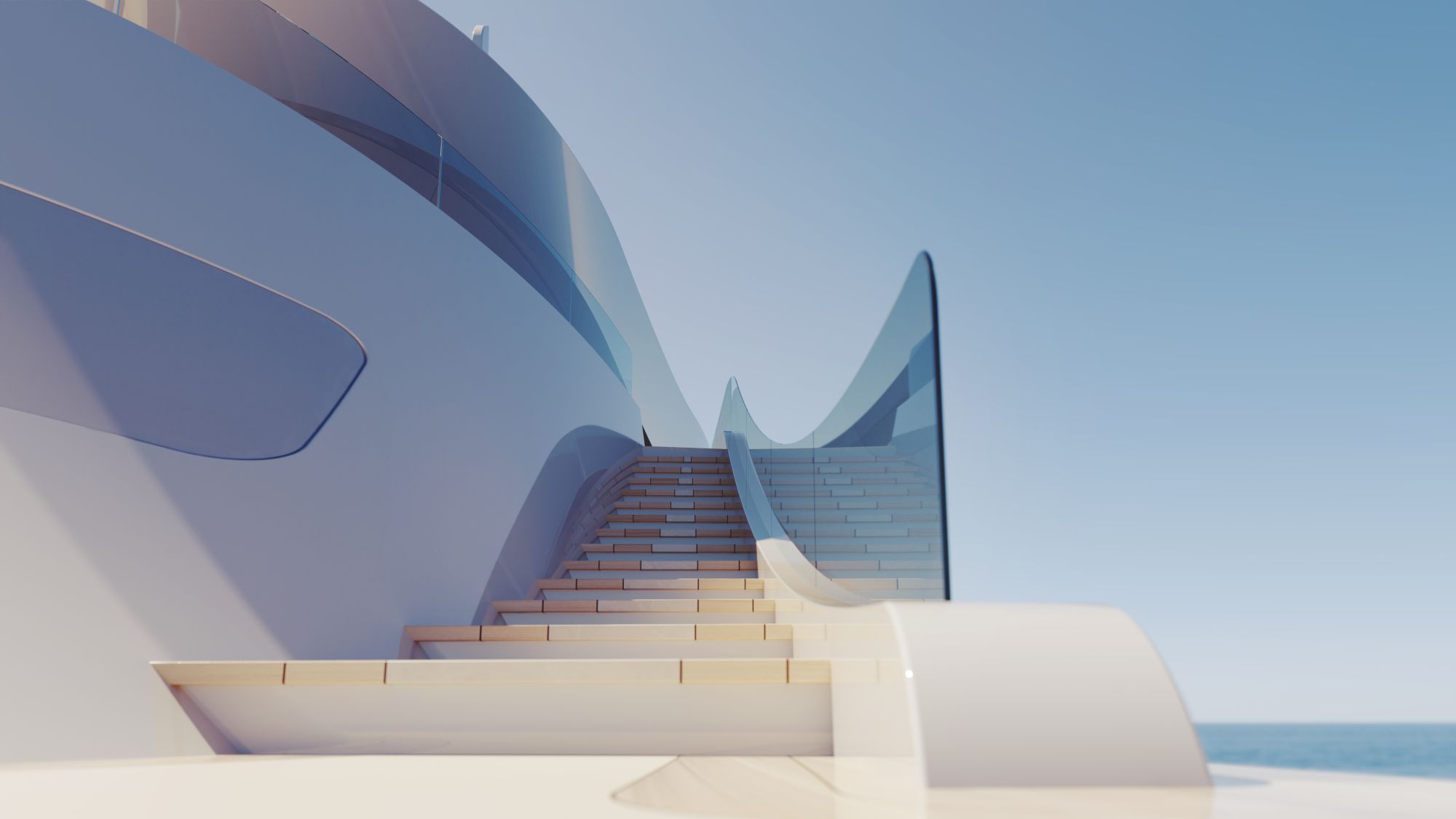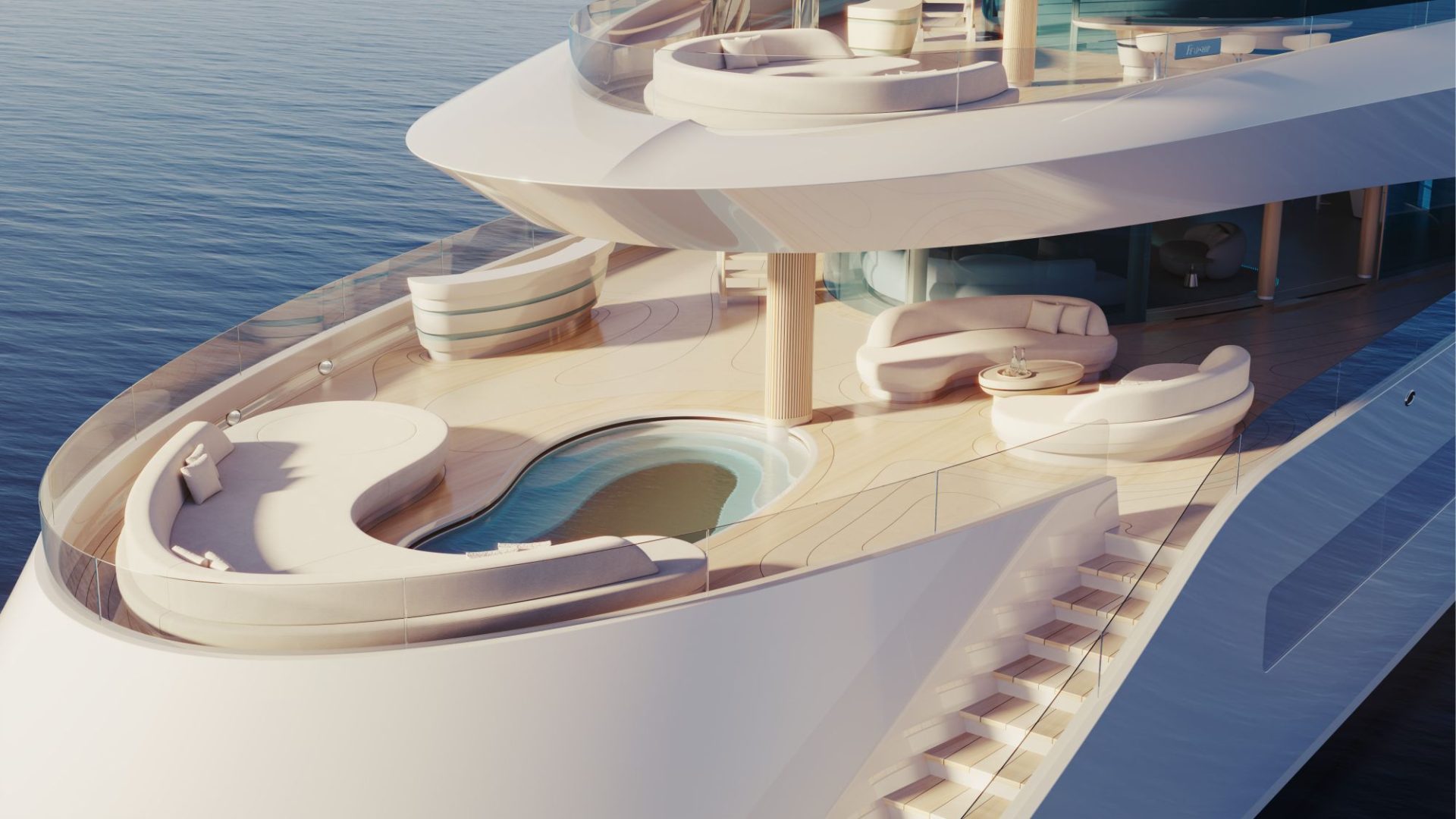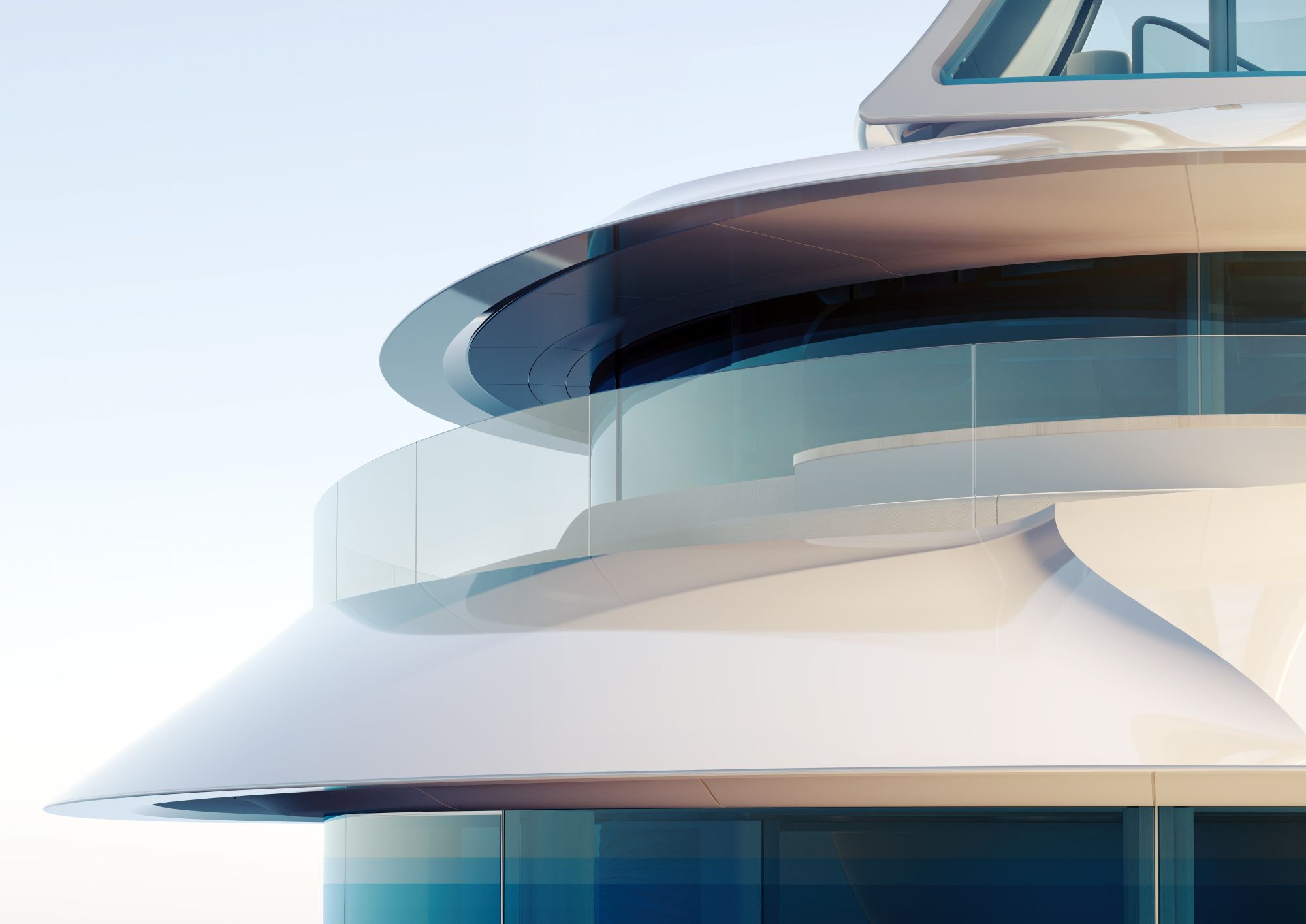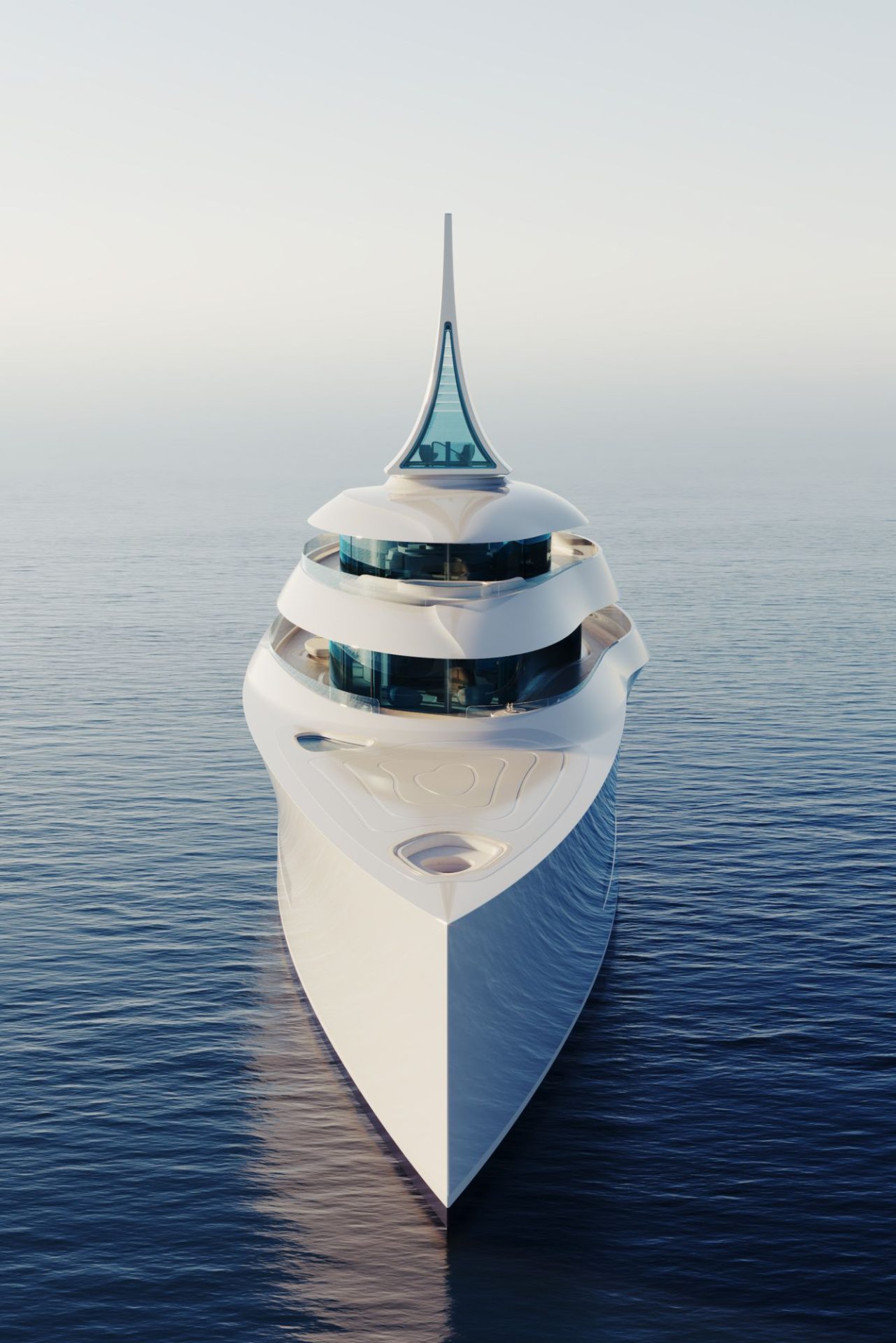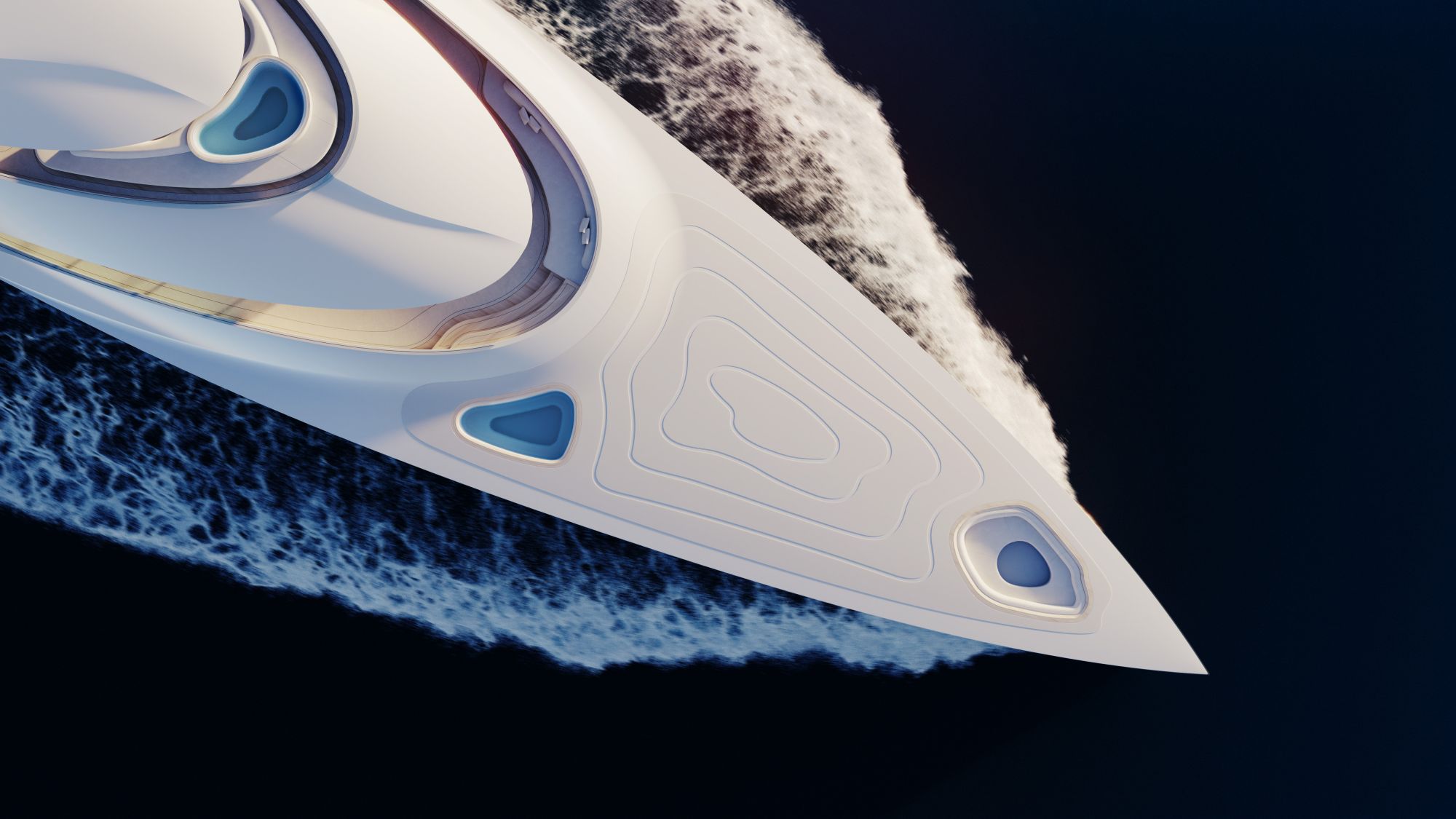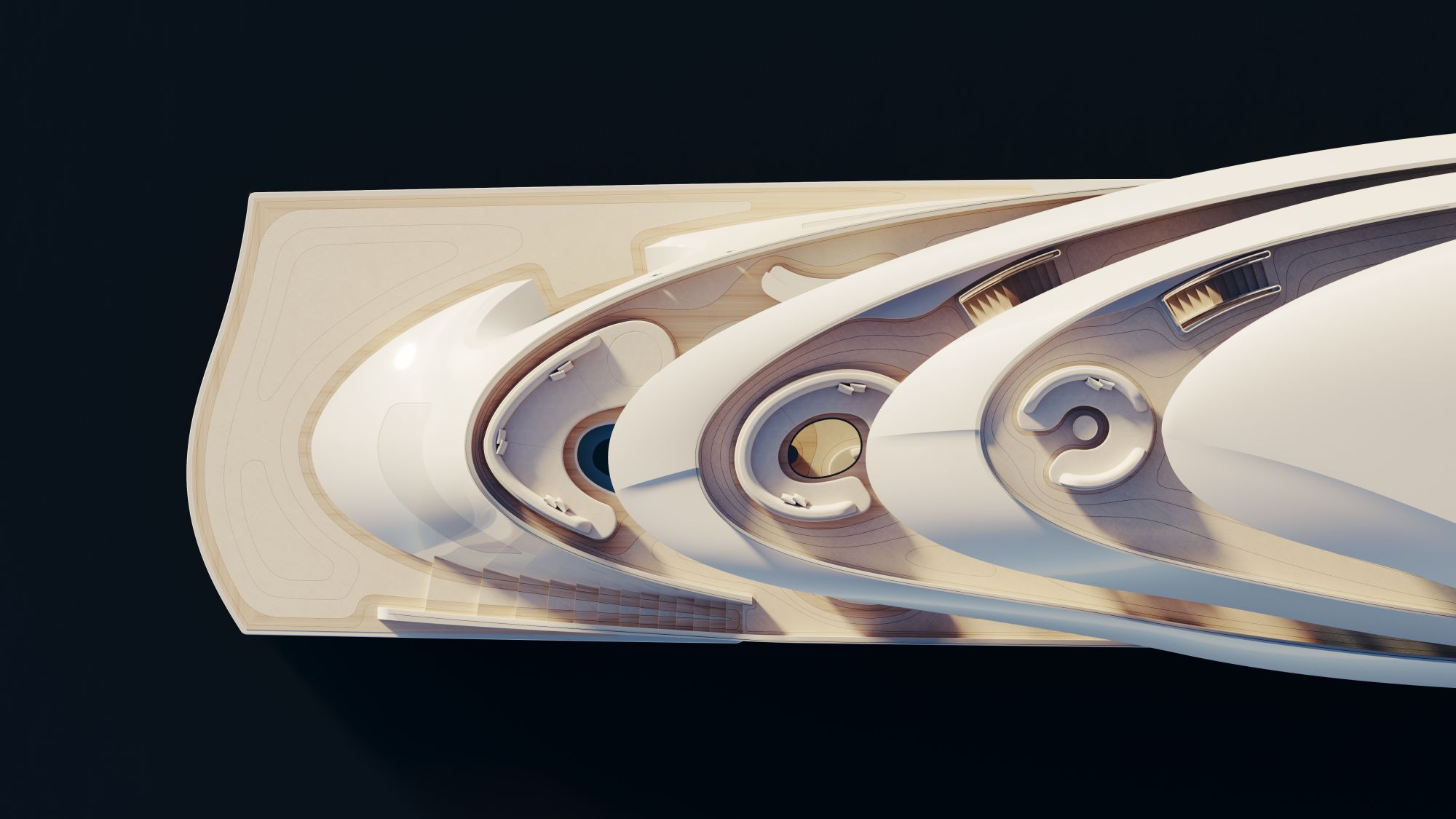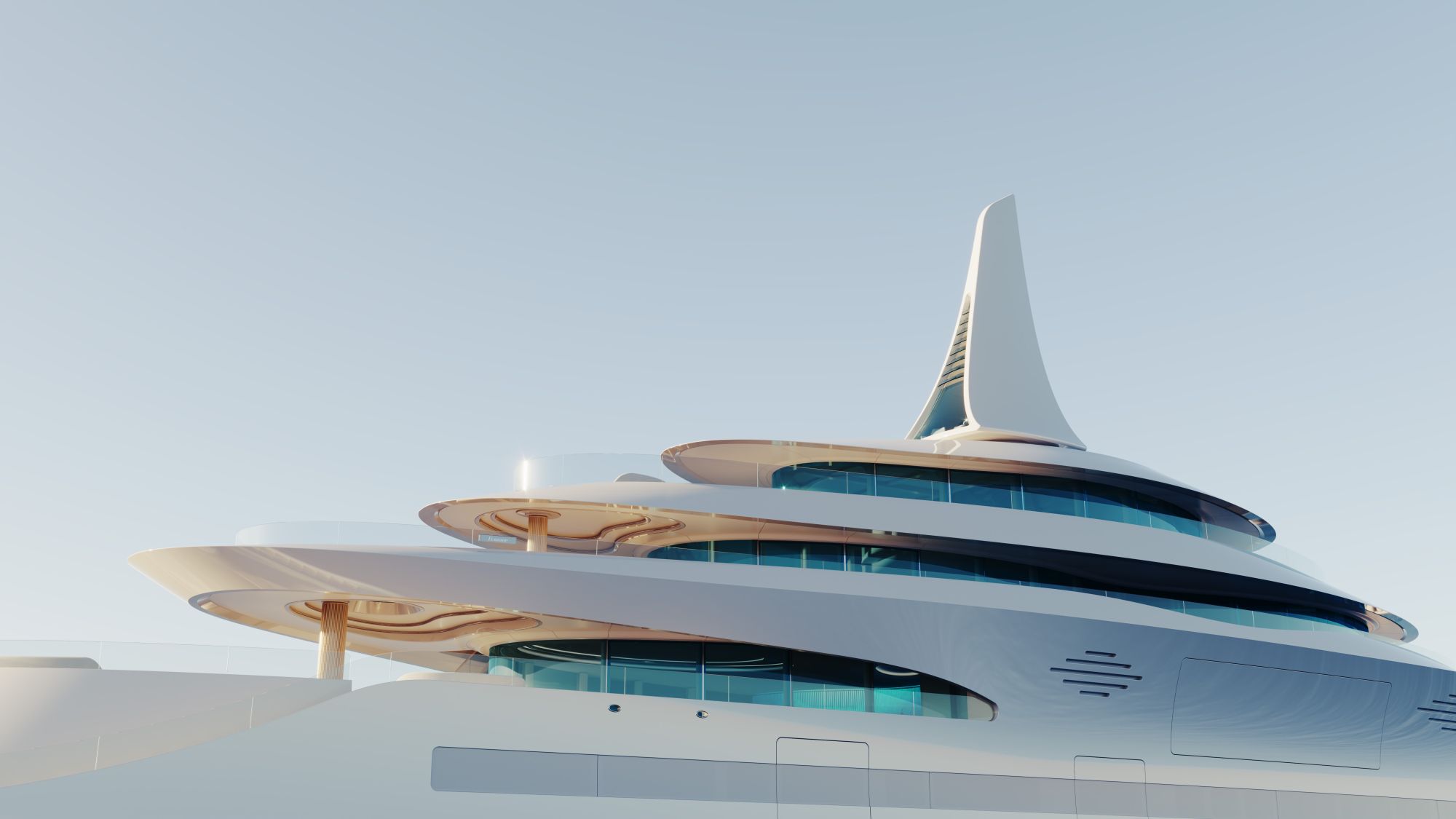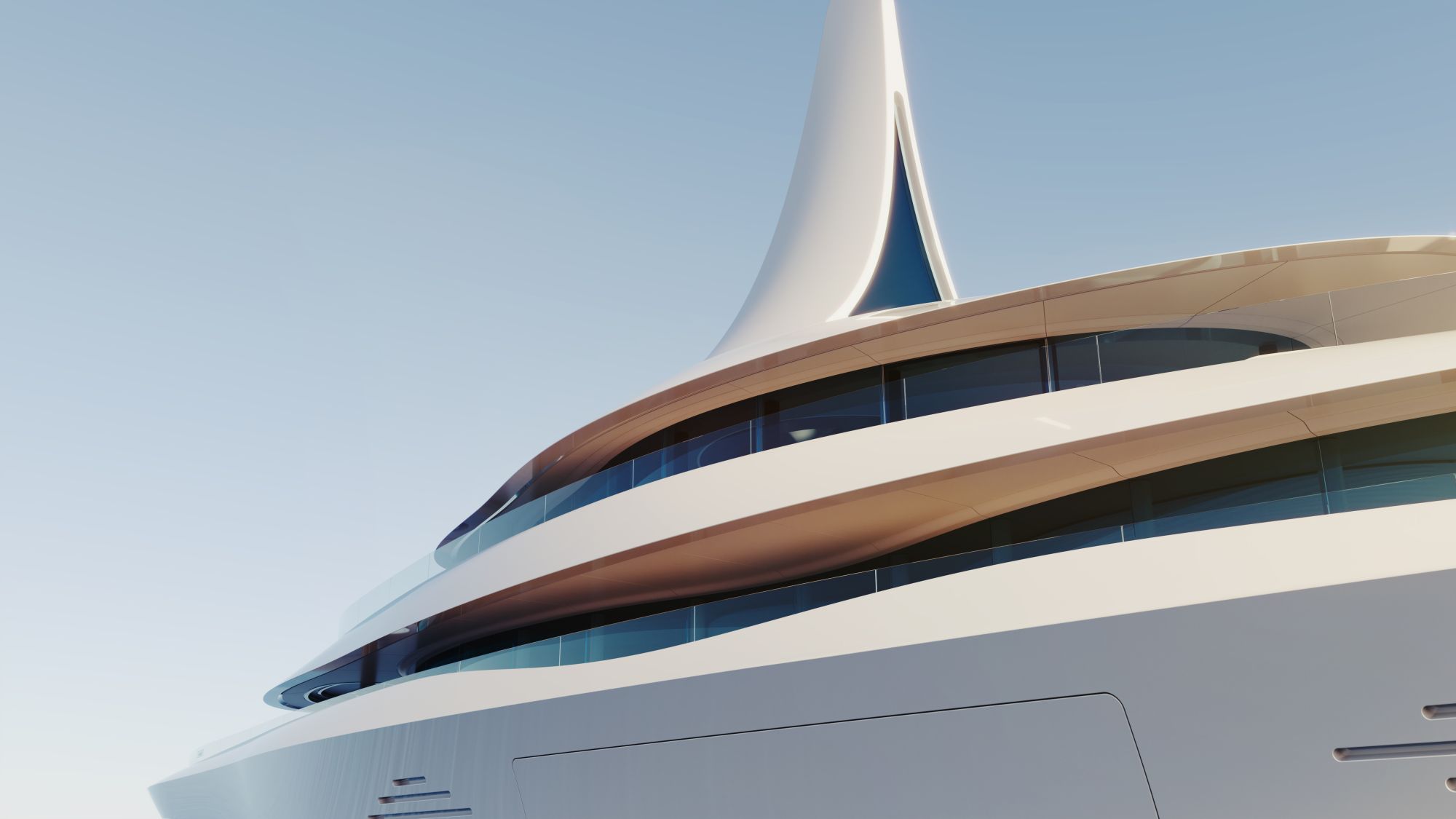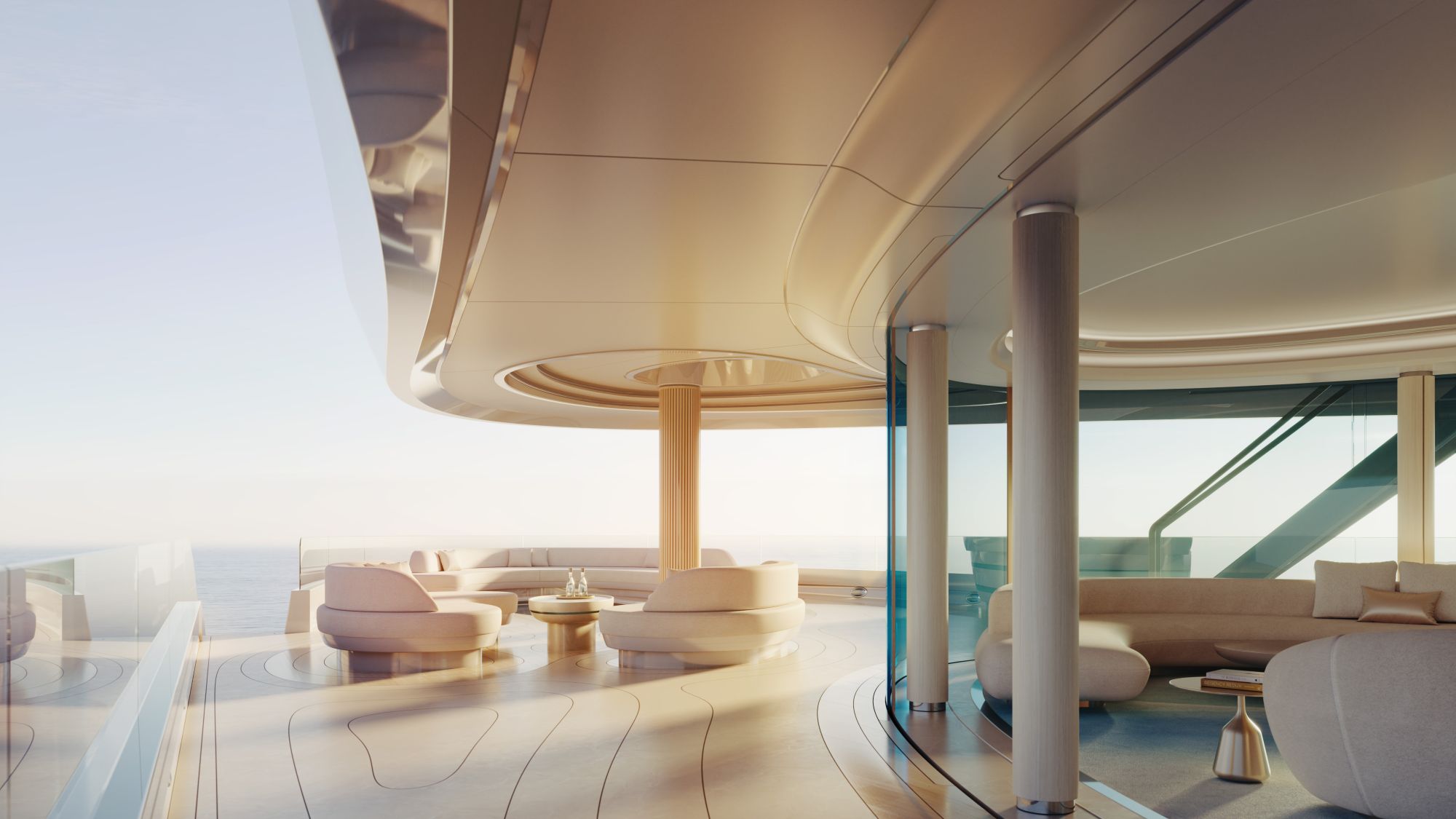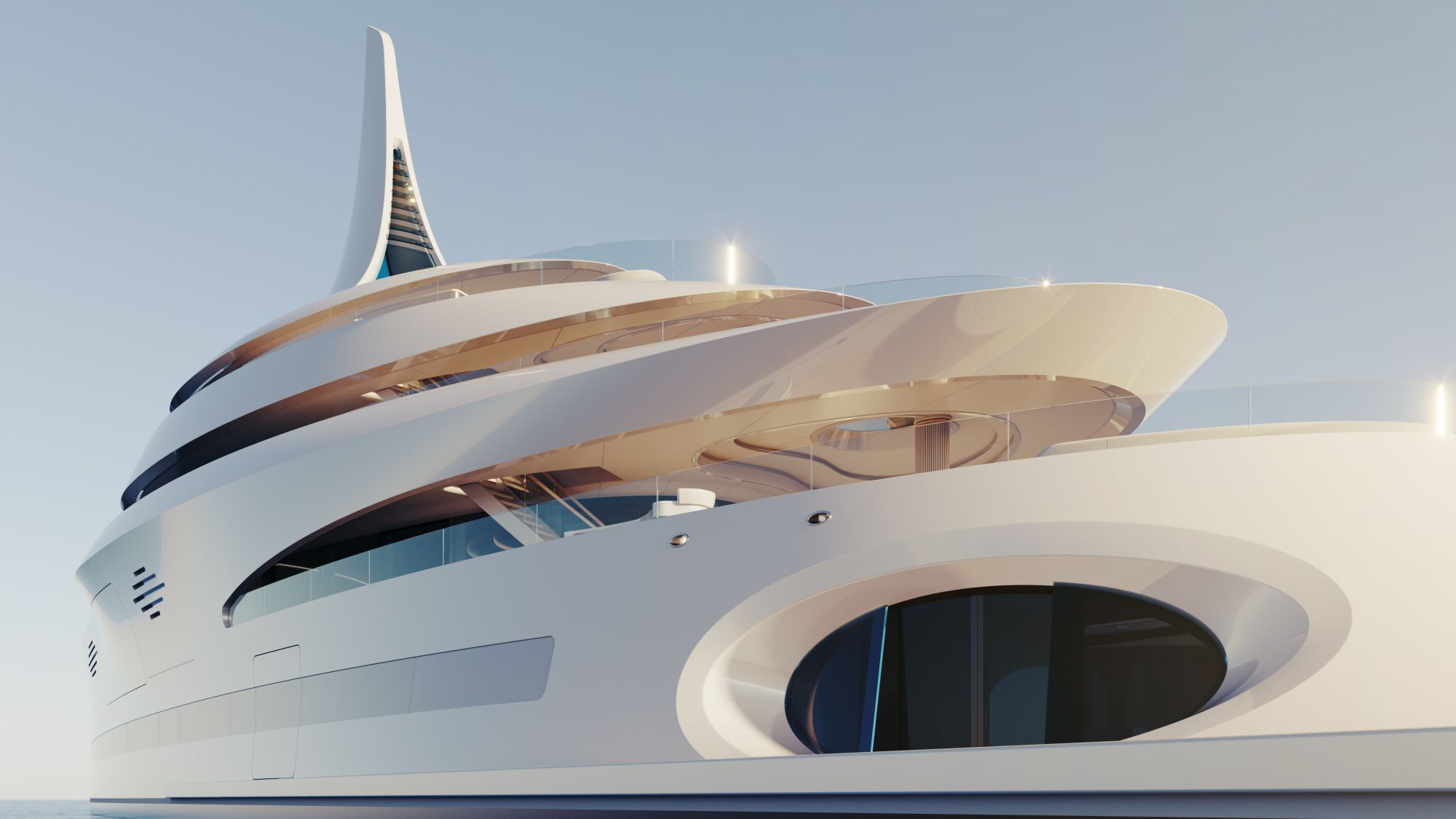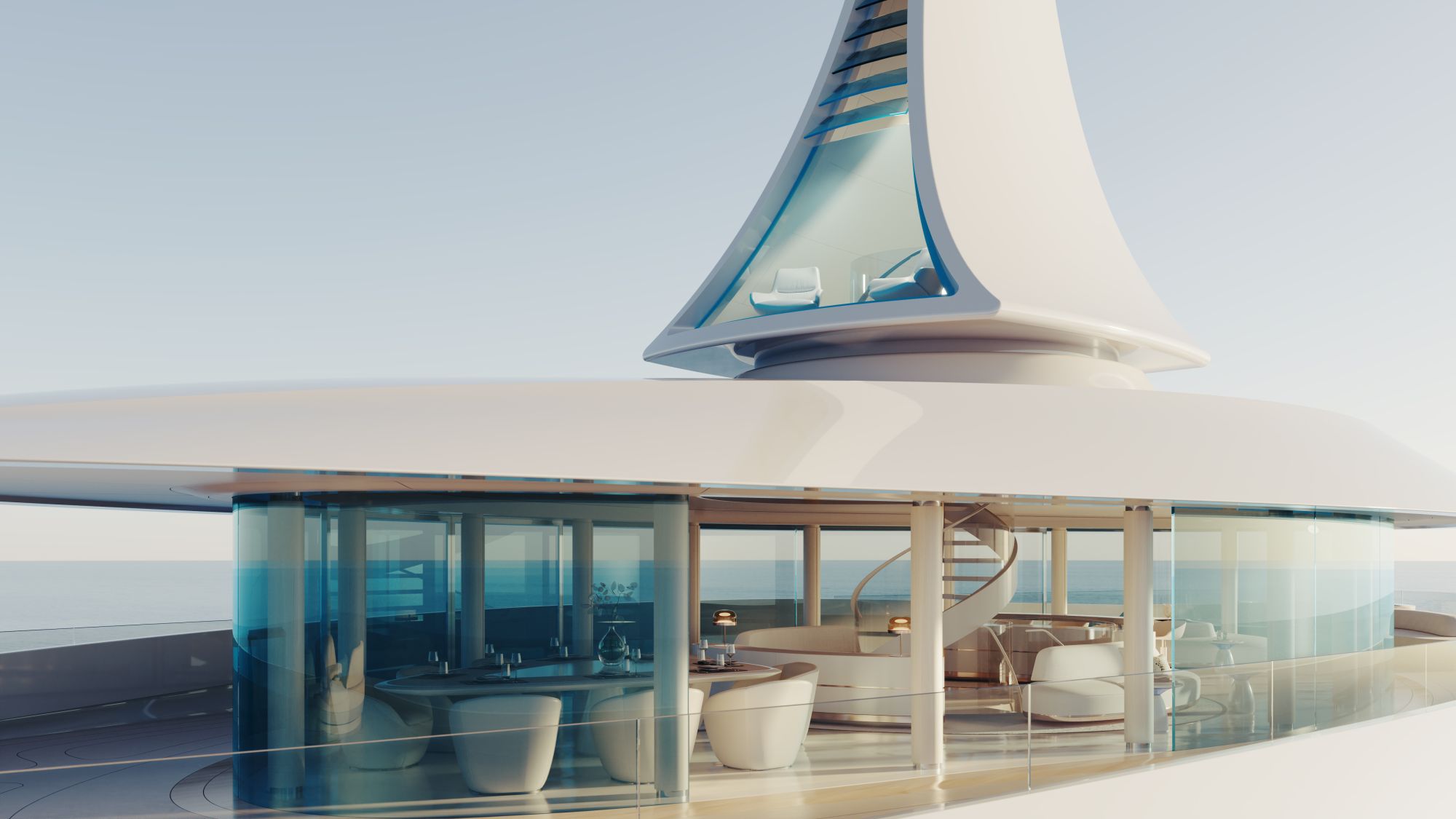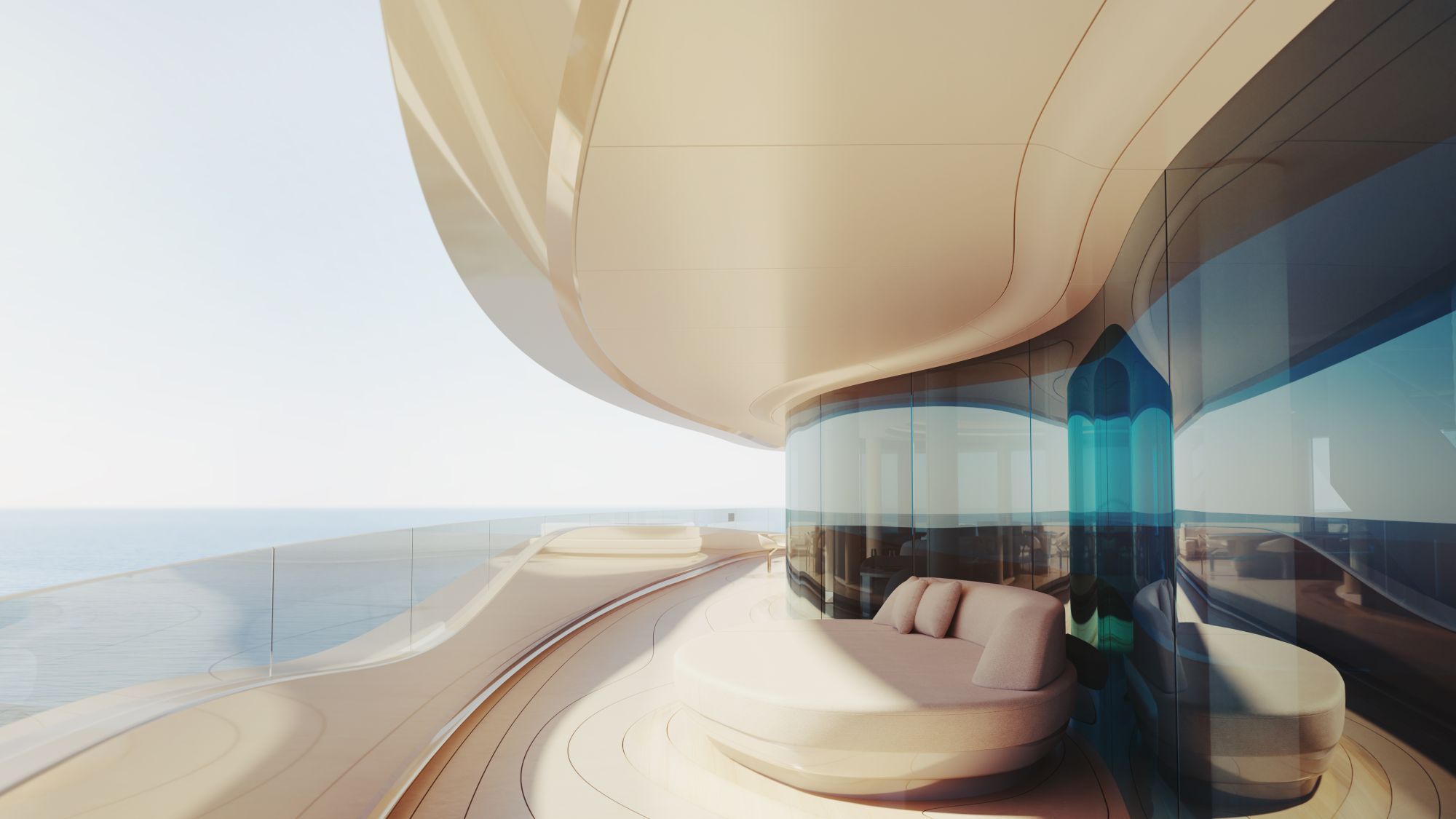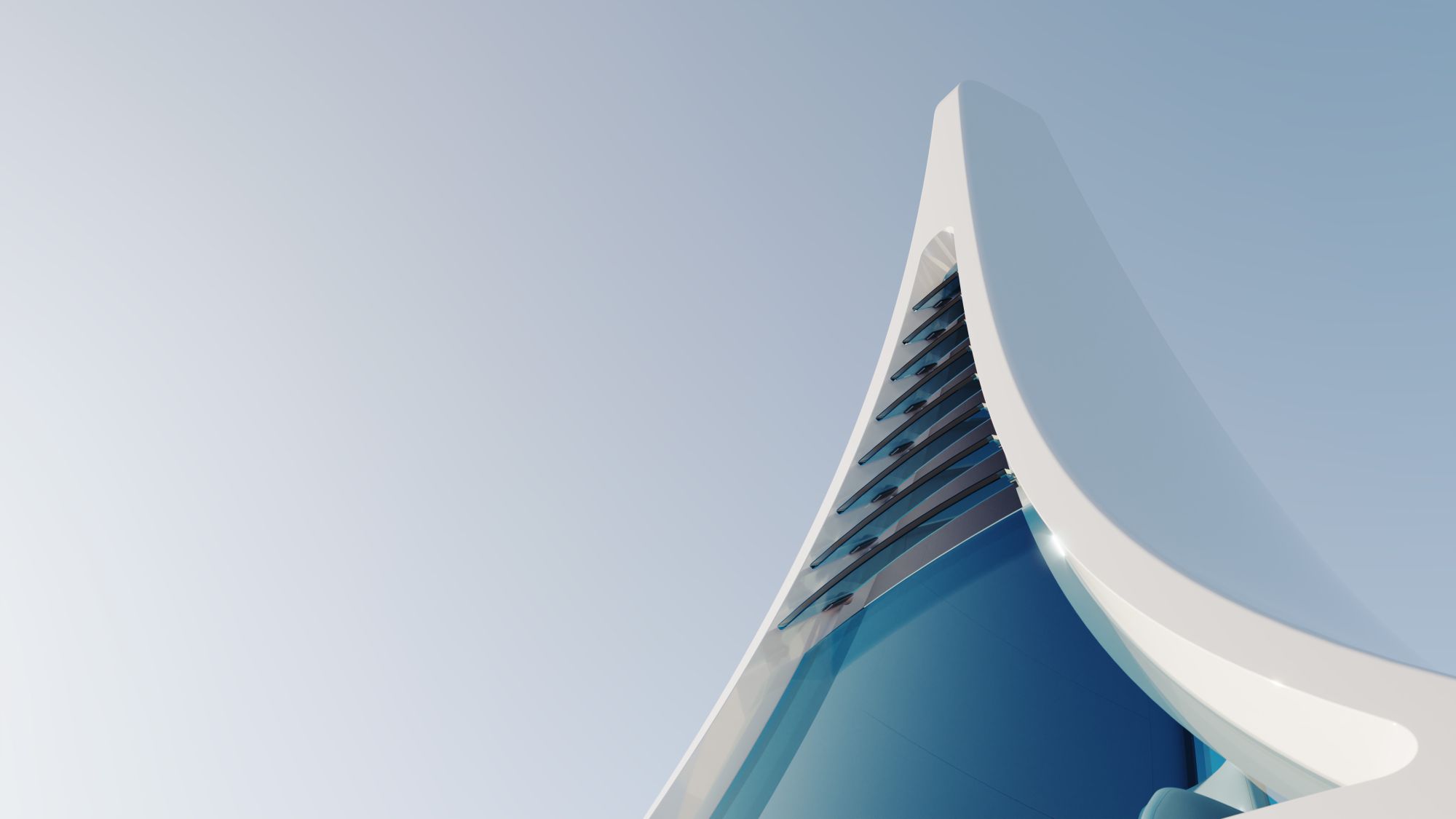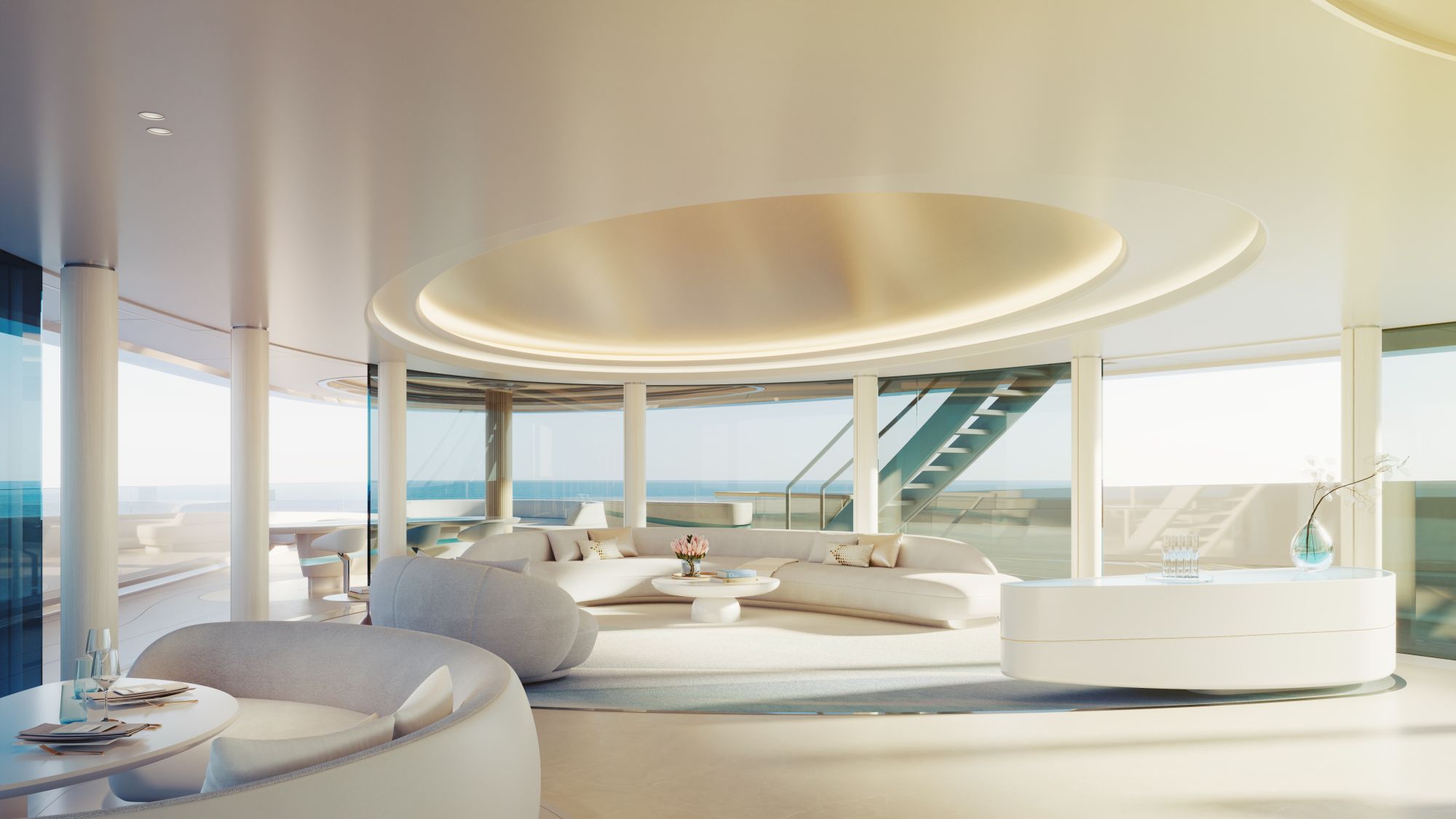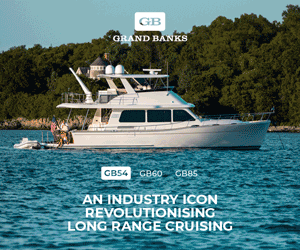Shifting sands
At the 2023 Monaco Yacht Show, Feadship debuted its twelfth cutting-edge concept design Dunes, a breathtaking 83-metre superyacht with significantly reduced energy needs.
12 October 2023
Dutch shipyard Feadship revealed its latest concept yacht at the 2023 Monaco Yacht Show, an eco-focused vessel with flowing lines reflecting the concept’s namesake: Dunes.
While the mast and stern add an air of mystery to the organic shapes of the superstructure, penned by Studio De Voogt, Feadship says it’s what lies underneath that sets this concept at the “forefront of sustainability”.
Dunes combines several features that reduce energy demand with technology that increases efficiency and eliminates emissions, as part of the yard’s vision of net-zero superyachts.
These features include shading windows to reduce cooling requirements, extra-capacity storage batteries, abolishing teak decks, a new type of fuel cell, and even a radical propulsor.
Assessed using the Yacht Environmental Transparency Index (YETI) assessment tool, Dunes can eliminate up to 95 per cent of the potential negative environmental factors associated with operating a superyacht, compared to a yacht meeting today’s minimum environmental regulations.
Asking the right questions
“Before we could begin drawing lines, we had to define the scope,” says designer Thijs Orth, who took the lead on Dunes. “From customer input, we thought the envelope should contain six guest staterooms, plus a spa area, a beach club, an owner’s private deck and a pool. It would be a substantial hull.”
He continues: “Then came a barrage of what-ifs. What if the engine room does not sit in the middle of the yacht? What if guest staterooms could have direct access to the beach club? What if we moved the bridge, as on concept Pure in 2021? What if the fuel cells don’t require hydrogen storage tanks?
“These and other questions led to new solutions for old problems. The knock-on effects of just one change – moving the engine room from the most comfortable spot on a boat to areas forward — opened up the possibility of an entirely new layout where gracious lower deck guest suites link to a fantastic beach club, water sports platform and the pool above.”
This new layout also eliminates large engine room air and exhaust trunks from compromising saloons or dictating stairway placement. Electric yachts do not need huge gearboxes, long shafts and propellors.
Electricity-generating fuel cells, battery banks and the power management station can be decentralised and located virtually anywhere convenient to the crew.
For aesthetic inspiration, Studio De Voogt focused on undulating waves of sand. Dunes’ undulating curves emerged as a backdrop for adaptable, multi-purpose spaces, endless views and a mix of open-plan areas and cosy, intimate spaces.
While decks often get squeezed by indoor accommodation, shady walk-around decks are a leading feature of this design. In addition to the feeling of being protected from the elements, they offer alternate circulation routes around the yacht as well as unexpected outdoor seating and entertaining areas.
An instantly recognisable feature of Dunes is that the asymmetrical superstructure has almost no straight lines. Spaces seem to drift from one to the other rather than march in stiff corridors. Staircases are circular or gently curved. So, too, are windows and doors of full-height glass.
This much glass could create tremendous heat loads in sunny climates were it not for attention to overhangs. Seen from the sun, only little slivers of the full-height superstructure windows are visible for much of the day as the curves follow the contours of the glass. One calculation showed these deck shoulders decrease heat building behind the glass by 60 percent.
A broader look at sustainability
Outside, the topsides of Dunes shimmer with teak-free decks made of millions of tiny glass or stone chips sealed in a transparent aliphatic polyurethane resin.
The resin surface can be sculpted in myriad shapes to show direction or amplify the impact of built-in features. The designers envisioned alfresco lounges appearing as islands on the decks and rendered them clad in golden, maple wood – a sustainable teak lookalike.
Notably, the uppermost pavilion deck structure is built of wood. While this is how most steel-hulled vessels were built in the days before aluminium, this choice is based on modern science. Treated timber is a CO2-negative building material with a high natural insulating capacity. This benefit and the beauty of the material come without increasing its overall weight.
The pavilion deck is an exciting concept. Surrounded by glass and separating a forward sun and jacuzzi zone from an informal dining and conversation area aft, it can be outfitted for anything from indoor dining to a club or conference room. Circular stairs lead from this area to the yacht’s striking 10-metre mast.
Further reducing the amount of energy needed to cool the yacht, the mast is part of Studio De Voogt’s Cool Core concept. Like a desert house, Dunes is divided into temperature zones. Sleeping quarters are cool (19 to 20 degrees), social areas are about 22 to 23 degrees, and the pavilion is around 24 to 25 degrees.
The pavilion is cooled using air drawn up the central staircase from other parts of the ship without the use of fans and ducts, thanks to a triangle of convex and concave foils in the mast.
As the breeze crosses the mast, its shape generates a low-pressure zone on the lee side, naturally pulling the slightly over-pressurised cooled air from lower decks to this level. Together with the large overhangs, optimised recirculation, and increased insulation throughout, Feadship calculates that HVAC energy use is reduced by 35 percent annually.
Feadship engineers also devised a slim, two-blade vane that nearly disappears in the mast structure. Used only at anchor, this turbine can yield about 25 MWh per year. The team also imagines Dunes’ foredeck coated with a thin film solar panel known as solar paint. This technology is in its infancy, and its efficiency today is low but has potential for the future.
Putting a different spin on props
Dunes introduces a breakthrough, high-efficiency electric propulsion system from ABB called ABB Dynafin, unveiled last May. In development and testing for ten years, the ABB Dynafin utilises revolving, vertical blades to mimic the thrust of a whale’s tail.
The first prototype is estimated to be available in 2025, with hydrodynamic efficiency targeted to be up to 85 percent, up from 65 percent for current pod drives, or 55 to 60 percent for typical propellors on shafts.
An independent study of ABB Dynafin of a passenger vessel design equipped with different propulsion solutions has verified savings in propulsion energy consumption of up to 22 percent compared to conventional shaft line configuration.
The ABB Dynafin propulsion will be driven by electricity generated by solid oxide fuel cells that use green methanol as a reaction agent. Methanol can be converted to hydrogen in one step and does not require cryogenic storage.
Green methanol (produced from non-fossil-fuel sources) is seen by Feadship as the best fuel option, due to the relatively high energy density and ease of storage.
“Contrary to the common assumption that using methanol means more than two times the fuel storage volume, on Dunes, we have so many power savings that we actually need less storage volume compared to a regular diesel fuel yacht,” says senior specialist Bram Jongepier.
In addition, Feadship is shifting to low-impact steel and aluminium for hulls and superstructures, which make up more than half of the build CO2 impact. Using a high scrap content and sustainable energy in the manufacturing process, these certified metals can be produced with 50 to 70 percent less CO2 emissions.
Feadship has already integrated low-impact aluminium on one vessel in build and made it standard material for all future new builds.




